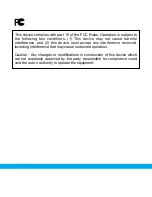
-11-
NB. If you shall connect main power, contact a professional
electrician.
c.
Alarm (page 14). Terminal A. Alarm A is connected to connector “+12”
and “A” and alarm B is connected to connector “+12” and “B”.
d.
External temperature sensor (page 20). Contact C. Connect the
connector.
e.
Adapter for GPS-receiver (page 23). Contact D. Connect the connector.
8.
When all desired cables have been connected, turn the screw cap clockwise in
order to create a tight seal. You can use plastic tape around the bundle of
cables to make it thicker and that way create a tighter seal.
9.
Set the DIP-switches in desired positions. Factory default is OFF setting for all
switches.
a.
Switch 1. Set to ON if you want the wired alarm inputs to be NC. See
page 34.
b.
Switches 2-5 are used to set the radio channel for short range radio
communication with Extra relays or wireless alarm detectors. See page
28.
c.
Switch 6. Set to ON if you do not use the short range radio and wants
to turn it off in order to decrease power consumption. See page 25.
d.
Switch 8. Set to ON if you want the relay not to ”remember” its
position in case of a power failure. See page 14.
10.
Push the ”hood” back to its original position and replace the screws and also
the screw on top of the hood.
11.
Connect the power cable to the accumulator and/or the power adapter to the
mains.
a.
The green lamp starts to flash for about 45 seconds.. This indicates that
the unit is searching and connecting to an GSM network.
b.
The green lamp stops flashing and lights constantly. The unit is now
connected to the GSM network and is ready to use.
c.
If the green lamp not stops flashing and also the red lamp starts
flashing, this means:
i.
No SIM card installed
ii.
The pin code of the SIM card is not deactivated (see page 6).
Check the SIM card settings
It is recommended to control the SIM card setting after installation. See page 31.
Do as follows:






































